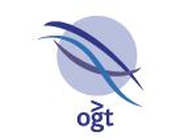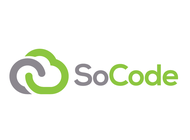Neurostimulation’s promise for patients
Life Sciences
- Date 11 Sep 2014
- Sectors Life Sciences
A new generation of neurostimulation devices – offering patients a radical transformation in treatment options – is just around the corner. Highly personalised and effective, the new treatments promise few, if any, side effects – and open up a whole new ecosystem of care, according to a report from product design and development firm Cambridge Consultants.
Neurostimulation is already an established treatment for conditions such as Parkinson’s disease, chronic pain and epilepsy. But advances in technology and clinical knowledge mean the therapy is now at a breakthrough point, making it possible to treat a wide range of new conditions – from traumatic brain injury to migraine, incontinence and even some cases of obesity – and improve the quality of life for millions of patients.
Conditions involving the complexities of the brain and spinal column are traditionally challenging to treat and often devastating for patients. While pharmaceuticals and surgery have been the traditional options for condition management, they are no longer enough. Delegates at the recent Cambridge Consultants neurostimulation workshop confirmed that the therapy will become a front-line option for patients, as it has the ability to revolutionise patient care. Instead of living on pharmaceuticals with numerous side effects, neurostimulation – which directly influences the body’s regulation systems by applying electrical signals to target nerves – delivers immediate outcomes, relieving patients of the pain, drugs and accompanying side effects.
But despite the potential for neurostimulation therapy, a new ecosystem of care that will both enable – and be enabled by – a new generation of devices is first required. Today’s systems are derived from the cardiac rhythm management systems of the past decade. That means devices are large – requiring large ‘pockets’ within the body where they can be stored. The need for internal batteries and long leads compromises the longevity of the implants – with regular repeat surgery required to replace batteries, and reposition or replace leads. And they are open-loop, ‘place-and-forget’ devices, offering little or no ability to respond to dynamic patient conditions.
Within the next 3-5 years, neurostimulation devices entering the market will be both smaller and smarter, the workshop panellists agreed. Improved through-body wireless technologies will allow control – and even power – to be brought out of the implant and delivered directly from outside the body through separate control or interface devices. System-on-a-chip technology has the potential to reduce a ‘hockey puck’ device to a single chip, complete with electrodes on board for direct connection to the nerve. And closed-loop devices will use advanced biosensors to both monitor and treat – responding to fluctuations in a patient’s condition or even their activity and location.
“The promise of neurostimulation for patients suffering from a whole range of life-limiting conditions is enormous,” said Simon Karger, head of surgical and interventional products at Cambridge Consultants. “Unlike current treatments, next-generation neurostimulation is instant, highly controllable and personalised, offering life-changing therapy with limited risk of systemic side effects in a way that doesn’t interrupt the patient’s daily life. Advancements in technology will help make this vision a reality for these patients.”
To date, neurostimulation has only been recognised for a small set of conditions like chronic pain management and Parkinson’s disease. However, the panel acknowledged that neurostimulation has the potential to treat other indications ranging from traumatic brain injury to hypertension and incontinence, as well as depression, migraine and cluster headaches, and obesity.
“The nervous system is notoriously difficult to understand but new technologies are paving the way for externally controlled and powered single-chip implants to completely change the way we treat patients,” said workshop delegate Daniel Powell, director of product strategy at Cyberonics. “Not only can this therapy offer them their life back – and control over their own condition and treatment – it can also help them forget they are patients at all.”



